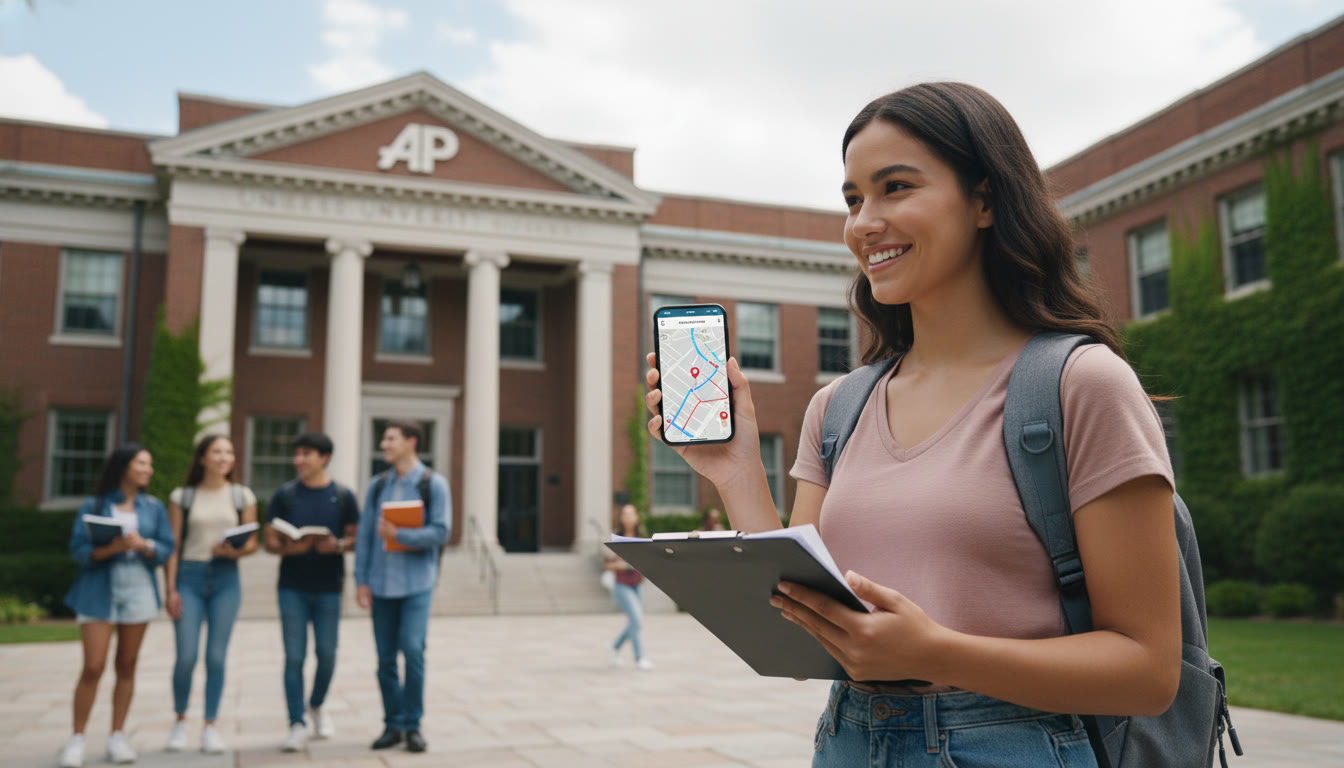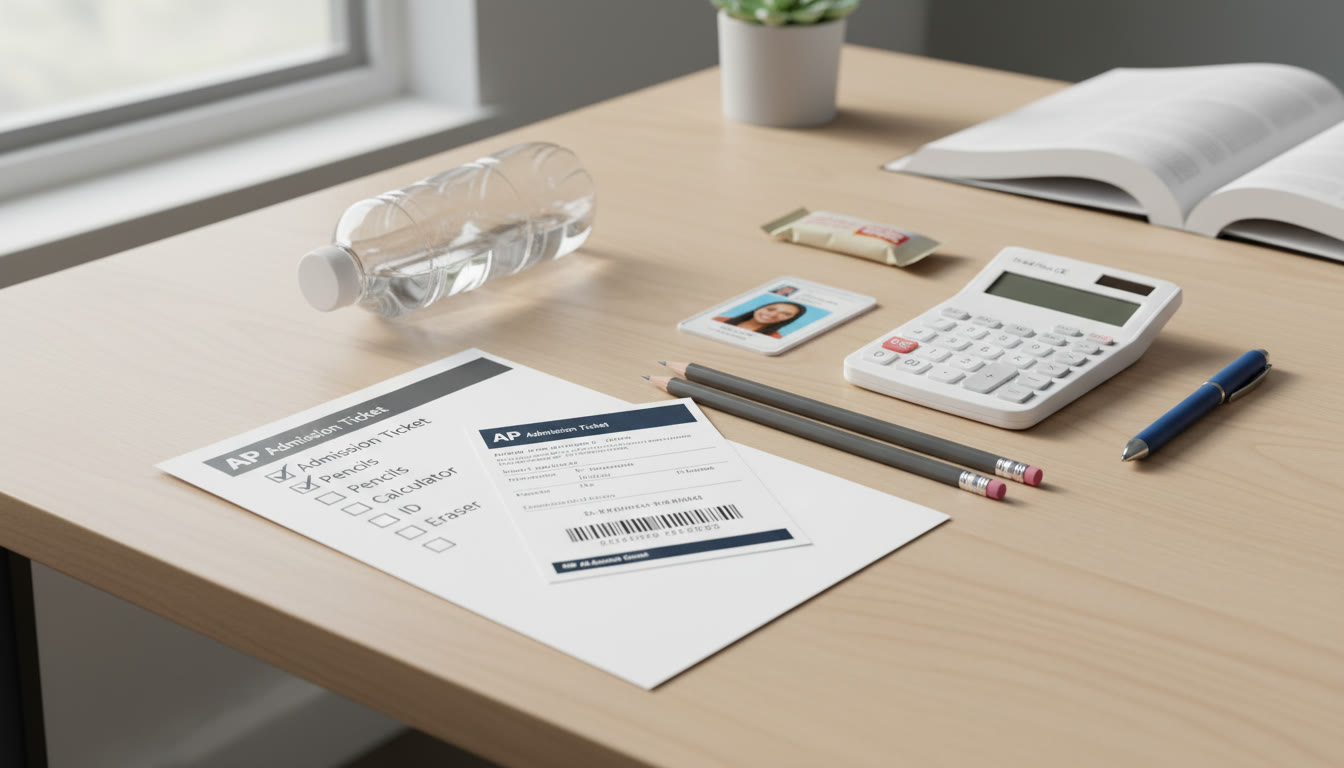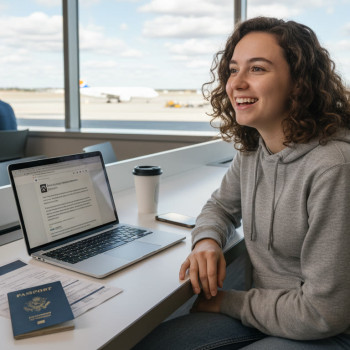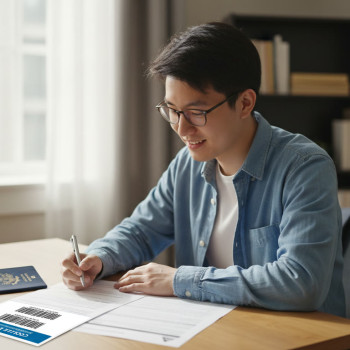Why travel planning matters (and why you’re not alone)
Imagine this: it’s the morning of your AP exam. You slept decently, you reviewed your formula sheet, and you even practiced timing. Then your bus is late, the test center is across town, and you’re sprinting into a room you’ve never seen before. Stress spikes, focus cracks, and all that prep doesn’t have the chance to shine.
Testing at a distant center — whether because your school doesn’t offer a particular AP, your approved accommodations require a specific site, or you’re an international or homeschooled student — adds logistical layers that can ripple into performance. The good news? Thoughtful planning turns those unknowns into predictable, manageable steps. This guide will walk you through everything: from mapping your route to packing the right items, coordinating accommodations, and building a calm test-day routine. Along the way I’ll share examples, checklists, a simple travel budget table, and natural places where one-on-one help like Sparkl’s personalized tutoring can make a real difference.
Start early: timeline and key deadlines
The earlier you start planning, the more options you’ll have. For AP students traveling to distant centers, some actions are best done months in advance, while others should be completed in the days before the exam. Here’s a timeline you can adapt to your situation:
- 3+ months before exam: Confirm registration and test center location with your AP coordinator. If you need accommodations, begin the SSD request process immediately; approvals and special materials can take time to arrange.
- 4–6 weeks before: Research transportation options, lodging (if needed), and the test center layout. If you can, visit the center to scope out the entrance, parking, and the testing room if open to visitors.
- 2 weeks before: Finalize travel bookings (bus, train, ride, or hotel). Prepare a packing checklist and practice your timing for leaving — simulation is underrated.
- 3 days before: Confirm reservations, map your route at the time you’ll travel, and pack your supplies. Charge digital devices you’ll use the night before.
- Day before: Rest, review light notes, and double-check your ID and admission ticket. Set multiple alarms and plan breakfast.
Tip: Create a personalized exam-day timeline
Draft a minute-by-minute plan for the day: when you’ll leave, where you’ll park or meet your ride, door-opening time, and buffer minutes (aim for 30–45 minutes early). If something feels tight, add an earlier departure — the buffer is where stress gets dissolved into calm.

Choosing transportation: options and trade-offs
Transportation choices depend on distance, local infrastructure, and personal needs. Each option has pros and cons; weigh speed, reliability, cost, and flexibility.
- Private car/Ride-share: Fast and direct, but vulnerable to traffic. Allows door-to-door travel and flexibility for luggage (like approved calculators or accommodations equipment).
- School-organized bus or van: Often the most convenient and least stressful because it’s coordinated, but it will run on a schedule and may arrive closer to exam time.
- Public transit (train, subway, bus): Cost-effective and reliable in many cities. Consider delays, transfers, and station navigation. Bring ear protection and a small pouch for essentials.
- Carpool with classmates: Socially easier and may cut costs, but ensure your driver understands AP arrival rules and plans for extra time.
Plan for contingencies
No matter how you travel, have a backup plan: a later bus, a secondary parking spot, or an alternate ride-share app. Save emergency contacts and the test center phone number (and the AP coordinator’s contact) in your phone and on paper.
Booking a night before? How to decide whether to stay over
If your center is hours away or public transit is unreliable on the exam morning, staying overnight nearby is a smart move. But weigh the trade-offs: a new environment could be energizing for some and distracting for others.
- Benefits of staying over: shorter morning commute, more rest time, control of timing, fewer transport risks.
- Downsides: unfamiliar bed or schedule, potential extra costs, and the risk of last-minute changes to the test room that you won’t see until morning.
How to choose a hotel (or a friend’s house)
Look for simplicity over luxury: proximity, quietness, and a reliable breakfast option matter most. A safe, quiet place to sleep and a good breakfast will beat scenic views every time. If you stay with family or friends, confirm sleeping arrangements and an agreed wake-up plan to avoid surprises.
Packing checklist: what to bring (and what to leave at home)
Pack strategically so you’re not scrambling before entry or struggling with banned items. The following checklist balances the official necessities with comfort items that help performance.
- Must-haves: Valid government-issued photo ID (school ID sometimes accepted — check your test center rules), AP admission ticket or confirmation, any SSD eligibility letter if applicable, two #2 pencils (for paper-based sections), approved calculator (with fresh batteries), watch (non-smart), snacks for permitted breaks, and a water bottle (transparent if required).
- Comfort and safety: Lightweight sweater, earplugs, mask (if you prefer), small hand sanitizer, tissues.
- For digital AP exams: Fully charged laptop if allowed (but most digital AP exams provide a device), charger in your vehicle or bag, and any required external hardware per your accommodation approval. Confirm in advance what electronics are allowed.
- If you have accommodations: Carry the SSD Eligibility Letter and any approved assistive devices. If your accommodation uses specific materials (large-print, audio), double-check the plan with your AP coordinator.
Communicating with the test center and AP coordinator
Clear communication is one of the single best ways to avoid last-minute panic. Your AP coordinator is your ally — they can confirm seating, arrivals, special-material shipping, and room assignments. If you’re taking an exam at a center that isn’t your school, call or email the center a week before to ask about:
- Arrival and sign-in procedures
- Parking and entrance location
- Where accommodations will be administered (separate room? different start time?)
- What to do if you arrive late or have an emergency
Keep notes from those conversations: the name of the person you spoke with, the date/time, and what they told you. This can save time and stress on exam morning.
Budgeting time and money: a simple travel table
Here’s a straightforward sample table to help you estimate costs and travel time. Adjust numbers to your situation and add rows for additional items you need.
| Item | Estimated Time | Estimated Cost | Notes |
|---|---|---|---|
| Round-trip public transit | 1.5–3 hours total | $6–$30 | Depends on distance and transfers |
| Ride-share / Taxi | 1–2 hours total | $20–$80 | Allow surge pricing and tip |
| Overnight hotel | — | $60–$150 | Book refundable rate if possible |
| Parking | — | $0–$20 | Check lot vs. street rules |
| Snacks / Breakfast | — | $5–$15 | Bring easy-to-eat, low-grease foods |
How to keep costs down
Carpool, use student transit passes, book refundable hotels when prices drop, and bring food from home. If cost is a barrier, talk to your AP coordinator about fee reductions or local resources — schools sometimes help students who need to test off-site.
Accommodations and accessibility: know your rights and your steps
If you have documented needs — extended time, separate room, assistive devices — those accommodations must be requested and approved in advance. Start this process early and keep your SSD eligibility letter with you on exam day. When traveling to a distant center, confirm the accommodation logistics specifically for that site: some centers handle certain accommodations differently, and some special-format materials must be ordered and sent to the center ahead of time.
Be proactive: ask who will be your point of contact at the center, whether the room will be nearby, and how late materials will arrive. If your approved plan requires special shipping of materials, verify that the AP coordinator ordered them and that they were received.
Practice a travel rehearsal: reduce the unknown
One of the most calming things you can do is rehearse the journey once. If possible, make a dry run during the actual time window you’ll travel on exam day. Check parking, count the minutes it takes to walk from the drop-off to the test room, and notice where bathrooms and quiet waiting areas are located.
If an in-person rehearsal isn’t possible, simulate the timeline at home: time how long it takes to get from your front door to the car, or from your bus stop to the center. Practice packing the night before and leave at your planned departure time to build confidence.
Test-day mental strategy: focus, breathing, and flexibility
Travel planning supports calm, but a few mental tools make the day work for you:
- Chunk your day: Break it into pre-entrance, arrival, test sections, and post-test. Expect small disruptions and assign them to the “logistics” chunk rather than the “exam” chunk.
- Use breathing and grounding: A 3–4–5 breathing pattern (inhale 3 seconds, hold 4, exhale 5) can settle nerves. Use it in the car, at the drop-off, or in the bathroom before going in.
- Reframe minor slip-ups: A delayed bus is an inconvenience, not a catastrophe. Use your buffer time and adjust priorities: rest, hydrate, and do a 10-minute light review if needed.
When things go wrong: emergencies and late arrivals
Despite best plans, things can still go sideways. If an emergency delays you, call the test center and the AP Services phone number (keep it saved). If you arrive late, don’t panic — you’ll be guided by the test center proctors. Document what happened later (times, receipts, names) in case you need to request a score delay or special consideration.
How academic help fits into the travel plan
Travel planning is logistical, but study confidence is academic. That’s where tailored academic support helps most. When you’re traveling to a distant center, you don’t want to waste your buffer time cramming last-minute topics; you want to use it for light review and calming routines. Personalized tutoring, like Sparkl’s one-on-one guidance, can make your prep more efficient in the weeks before travel. A tutor can:
- Identify high-impact topics to review during short travel windows.
- Create a tailored study plan that fits your travel schedule and energy levels.
- Use AI-driven insights to track your progress and recommend targeted practice — especially useful when you have limited time between travel and test start.
When logistics are sorted, academic confidence multiplies. Book a few short tutoring check-ins in the days before the exam for focused refreshers rather than marathon study sessions.
Sample day-of schedule (for a distant center)
This is a realistic sample timeline to adapt. It builds in buffers, rest, and simple review moments without overloading your brain.
- 5:30 AM — Wake up, light stretching, coconut water or easy breakfast.
- 6:15 AM — Final pack check: ID, admission ticket, SSD letter (if applicable), pencils, calculator, snacks.
- 6:30 AM — Leave (adjust earlier if transit is unreliable). Use breathing exercise during the ride.
- 7:15 AM — Arrive at center, sign in, settle into a quiet spot. Do 10 minutes of light review (flashcard highlights only).
- 7:45 AM — Bathroom break, final walk-through of simple formulas or vocabulary; breathe.
- 8:00 AM — Enter test room; follow proctor instructions and trust your preparation.
Post-exam plan: recovery and next steps
After the exam, give yourself permission to decompress. Celebrate the logistics win — you made it through travel and testing! If you were traveling overnight, keep receipts and note any unusual events in case you need to contact your school or the AP Services. Later, review which parts of your travel plan worked well and what you might change for the next exam.
Real-world examples and small habits that add up
Students who test off-site often report that small rituals made the biggest difference: packing a “calm kit” with earplugs and a smooth snack, practicing the route once, or scheduling a short Sparkl tutoring session the afternoon before to focus on one high-yield topic. One student I worked with reduced pre-test anxiety simply by pre-sorting parking options and emailing the test center a picture of their SSD letter — the familiar interaction created a tiny ritual that signaled readiness.
Final checklist: one page to carry with you
Print or screenshot this final checklist and keep it in your pocket or backpack.
- ID and AP admission ticket
- SSD Eligibility Letter (if applicable)
- Two #2 pencils and approved calculator with fresh batteries
- Watch (non-smart), snacks, and water
- Phone with saved emergency numbers and test center contact
- Directions, parking info, and backup route
- Small cash for transit or parking

Parting advice: balance preparation with presence
Traveling to a distant center can feel like an extra exam of its own. But with a plan that respects your sleep, accounts for transit variability, and keeps your academic focus sharp, you’ll convert logistical friction into a steady path to success. Use buffer time, communicate with coordinators, and practice the route if you can. When it comes to last-minute confidence boosts, targeted support such as Sparkl’s personalized tutoring — brief, focused sessions that fit around your travel — can transform a panicked cram session into a calm, high-impact review.
Above all, remember that test day is only one small piece of your journey. You’re building skills that matter beyond scores: planning, problem-solving, and resilience. Breathe, trust your preparation, and let your carefully laid plan carry you through to the other side.
Want a quick plan built for your situation?
If you’d like, take five minutes to map your travel details (center address, transit options, estimated times), and consider booking a short one-on-one session with a tutor who can make the last week of prep targeted and calm. A tailored plan plus practical practice is the simplest route to walking into a distant center feeling in control — and walking out knowing you did your best.

















No Comments
Leave a comment Cancel